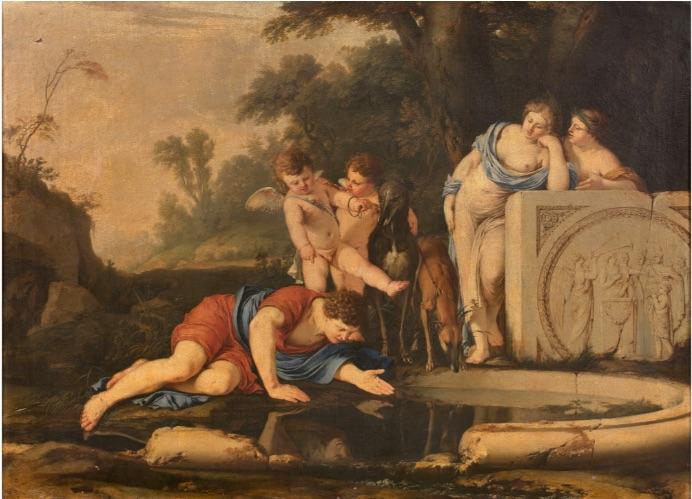Governments are increasingly cracking down on money laundering in the art market through stricter transparency requirements for auction houses and other art sellers. But a recent conflict over a nearly $1 million painting in France shows the difficulty of balancing the need for transparency with clients’ desire for confidentiality.
In November, London dealer Patrick Mathiessen bought a painting attributed to Laurent de la Hyre titled (circa 1640) at Paris auction house Artcurial for €918,400 ($985,000). The provenance for the work was slim, with just a single line indicating: “Anonymous sale; London, Christie’s, July 19, 1929, n° 111.”
Mathiessen tried to get more information from Artcurial, but hit a wall. “I’ve never had anything like this face-off with the French,” he told Artnet News.
Mathiessen said he wanted to obtain a certificate from the Art Loss Register, which indicates that a work has not been reported stolen, in anticipation of an eventual sale, possibly to an institution in the U.S., Canada, or Australia. “I said, ‘We don’t need a name and telephone number, but we need some background data about where this painting has been and who it has been sold by, sufficient that in the future we could identify the person if there was a problem.’ Because a painting that hasn’t had a provenance for 100 years, it could have been stolen.”
Mathiessen said he still got nowhere with Artcurial, even when he offered to have the information kept confidential by attorneys acting as intermediaries who would have the details of ownership in case a conflict or challenge ever arose in the future.
He said he wrote to the European Commission in Brussels, but was told they could not intervene directly and recommended that he go to the French regulatory authority TRACFIN. Matthiessen said he kept Artcurial in the loop about his efforts, but never received any additional disclosures.
“Artcurial is very attentive to the laws and regulations (AML, Tracfin…) and we check the information on our sellers very carefully,” Artcurial associate director Matthieu Fournier told Artnet News in an email. “If something is not clear enough about the identity of the seller or the provenance, we refuse to be entrusted with the artworks. Once we have obtained all the guarantees required from our seller, the least we can do is to protect their identity and not disclose it to other clients. Reliable confidentiality is key to our business and one of our most important values.”
Through his own research, Mathiessen learned that the painting had at one point been in Italy, and as recently as last year, because a label on it read “scuola Francese” or “French School” in Italian.
Artcurial countered this, claiming the painting had come from a “bourgeois” family in Brussels where it had been for “at least a generation.”
“All the alarm bells went off in my mind,” said Mathiessen. “I said Brussels? The only country in Europe where there are no import/export laws?” Matthiessen said his gallery eventually reported Artcurial to London’s Serious Fraud Office.
Last month, Artcurial canceled the sale to Mathiessen, saying that the allotted time to pay had expired. “The winning bidder did not honor his commitment and did not pay,” Fournier said. “The case is now closed and leaves us bitterly disappointed.” The picture has been returned to the seller, the auction house said.
Mathiessen said he still intended to purchase the picture. “The reason I was fighting was because I desperately wanted the picture,” he said. “I put six months of work into this picture and I was prepared to go the extra mile to get it.” He added: “the money was there for it but I was not going pay $1 million-plus for a picture which I could not convey title to an American institution later on.”
Ultimately, Artcurial didn’t provide enough information for the Art Loss Register to issue a certificate for the work. Julian Radcliffe, chairman of the Art Loss Register, told Artnet News that the organization requires at least “some indication as to what the person is, like ‘a French collector.’”
“Because if there is a problem later, we need to be able to go back to the auction house,” he added. “We’re not doing it out of nosiness. There is no conceivable excuse for an auction house not making that clear to a consignor.”
Susan Mumford, CEO of ArtAML, an advisory that helps art businesses comply with anti-money laundering laws (AML), noted that France, as an E.U. member state, is regulated under AML. “This will incorporate provenance for secondary-market transactions, as a significant element of risk of money laundering is previous ownership,” she said. “Overall, AML’s shift towards transparency in art transactions will, in time at least, change the culture of the sector. Indeed, we speak with small art businesses each week who laugh at the suggestion of conducting customer due diligence on auction houses (which is required of them). Will the norm of not passing on provenance records change? Time will tell.”
Ivan Macquisten, an art market analyst and advisor, is currently reviewing the E.U.’s import licensing regulation for cultural goods, which is due to be enforced starting in June 2025, on behalf of trade associations in the art market. “I foresee serious issues with that,” he said, “particularly to the detriment of the European art market.”
“Introducing legislation is one thing. Ensuring that everyone subject to it—and those in charge of enforcing it—have a clear view of how legislation is interpreted and works in practice is another.”

























